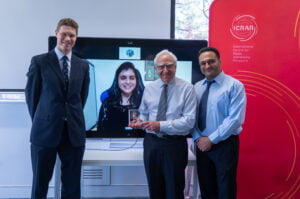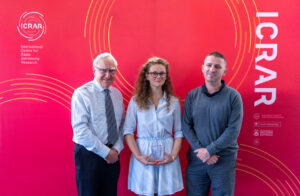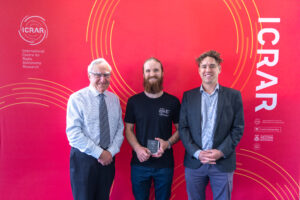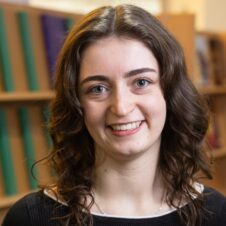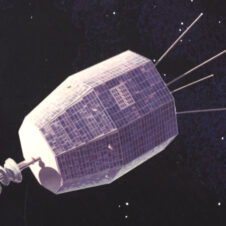THE KEN AND JULIE MICHAEL PRIZES RECOGNISE THE OUTSTANDING ACHIEVEMENTS OF OUR GRADUATE STUDENTS AT BOTH ICRAR NODES.
The winners for 2020 are Dr Pikky Atri from ICRAR-Curtin and joint winners Dr Kate Harborne & Benjamin Dix-Matthews from ICRAR-UWA.
Pikky completed her undergraduate and masters degree in Physics and Astrophysics from Delhi University. During her masters she was introduced to the different kinds of explosions in the universe, which she immediately took a liking to. She started with a few small X-ray data projects covering gamma ray bursts, X-ray pulsation from pulsars and quasi periodic oscillations in stellar mass black hole X-ray binaries.
Pikky then decided to move to a different wavelength and a different hemisphere of the world to further study black hole X-ray binaries. She joined ICRAR-Curtin for her PhD and submitted her thesis in July earlier this year. Pikky’s thesis successfully demonstrated that a wealth of information can be uncovered about black hole X-ray binaries using high precision radio astrometry (VLBI) including but not limited to understanding black hole birth mechanisms. She also used VLBI to search for new black hole systems in our Galaxy. Pikky now works at ASTRON, the Netherlands Institute for Radio Astronomy.
Kate came to ICRAR/UWA from the UK in 2016 to work with the computational theory group, supervised by Chris Power and Aaron Robotham. Her research project used particle-based models to investigate how the stellar kinematics of a galaxy can inform us about its evolutionary history.
During her PhD, she developed open-source software for generating mock-observations of simulated galaxies. With this, she was able to successfully correct observed stellar kinematics contaminated by atmospheric blurring effects. This body of work was published over the course of three first-author journal papers and has seen significant interest from integral-field spectroscopy (IFS) teams around the world. She is looking to apply the tools developed over the course of this PhD to enable faithful comparisons between a variety of cosmological simulations and IFS observations of galaxies. She completed her PhD during the lock-down period earlier in the year and continues to work with the computational theory group at UWA as an Astro3D Research Associate.
Benjamin’s PhD focusses on leveraging phase-stabilization technology developed for the Square Kilometre Array telescope by the ICRAR Astrophotonics group and applying it to ultra-stable optical signal transmissions through the atmosphere for use in high-speed communications, geoscience, and fundamental physics.
His work has led to international collaboration with both private and public organisations around the world. So far, he has published two first authored papers, the most recent of which was published in Nature Communications based on a collaboration with the French space agency, CNES. This paper demonstrated the world’s most stable coherent optical transmission through the atmosphere. The transfer stability demonstrated surpassed the world best optical atomic clocks, an important step to facilitating world-class optical atomic clock comparisons for applications in chronometric geodesy and fundamental physics. Ben has not yet completed his PhD.
Congratulations to the winners and their supervisors, and to all the applicants for their achievements. Thanks to Dr Ken Michael for his generous support for this Prize, first awarded in 2017 to Chenoa Tremblay & Tristan Reynolds, in 2018 to Ahmed Elagali & Sam McSweeney, and in 2019 to Mengyao Xue & Fei Qin.
